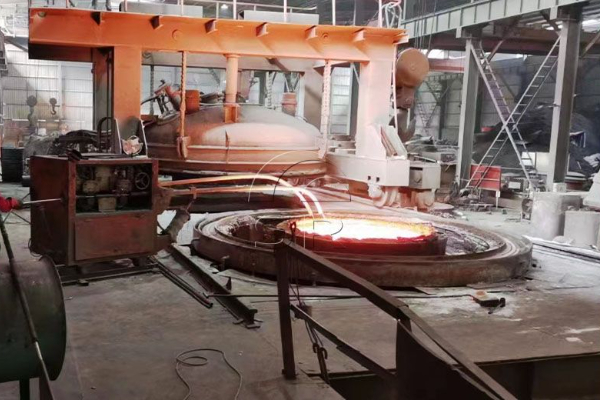Fire proof brick for VOD furnace
In the modern metallurgical industry, vacuum oxygen decarburization furnace (VOD furnace) is widely used in the refining process of stainless steel and high alloy steel. Due to its special working environment, VOD furnace has extremely high requirements on refractory materials, especially under the conditions of high temperature, strong reducing atmosphere and frequent alternation of mechanical and thermal stress. The selection of suitable refractory bricks is crucial to the service life of the furnace lining and steelmaking efficiency.

What types of fire proof brick are used in VOD furnaces?
The refractory bricks used in VOD furnaces are quite special. First, we need to understand the ladle used in the VOD method. Except for the lining of the slag line, ordinary magnesia-chrome refractory bricks, magnesia-dolomite bricks, zircon bricks and high-alumina refractory bricks are mainly used; permanent linings use magnesia bricks or clay bricks; the connection between the bottom and the side wall of the ladle can also be made of magnesia refractory ramming materials. Magnesia-dolomite bricks, magnesia-chrome bricks, dolomite bricks and lime bricks are generally used in the slag line.
The erosion of magnesium dolomite brick lining is mainly near the surface layer. Silicate materials are distributed on the grain interface, which is relatively dense. The slag erosion depth is about 15mm. The original brick layer has hardly changed. Cracks will occur between the metamorphic layer and the original brick layer, and finally it will be damaged due to thermal spalling. The slag erosion depth of the directly bonded magnesium chrome brick lining is about 40mm. There are large cracks at the interface. Its organizational structure is loose and will collapse under the action of thermal stress, causing premature damage. Magnesium dolomite bricks have good high-temperature creep properties and can buffer the spalling caused by thermal stress; Ca0 can inhibit the growth of periclase crystals, forming small and complete crystals, and the grain interface increases and is wrapped by Ca0, so it can prevent the invasion of slag and extend the service life. This shows that the use effect of magnesium dolomite bricks is better than that of directly bonded magnesium chrome bricks.

The organizational structure of semi-rebonded magnesium chrome bricks is also relatively dense. There are only tiny cracks on the interface, and the damage is mainly melting loss. The slag penetration is shallow. Compared with the directly bonded magnesia-chrome brick, the surface of the coarse-grained fused magnesia-chrome sand and chrome ore on the working surface undergoes secondary spinelization and is wrapped by the slag to form a protective layer. সুতরাং, the semi-rebonded magnesia-chrome brick has good slag resistance and its use effect is also good.
 রোংশেং রিফ্র্যাক্টরিজ ফ্যাক্টরি
রোংশেং রিফ্র্যাক্টরিজ ফ্যাক্টরি
WeChat
Wechat দিয়ে QR কোড স্ক্যান করুন